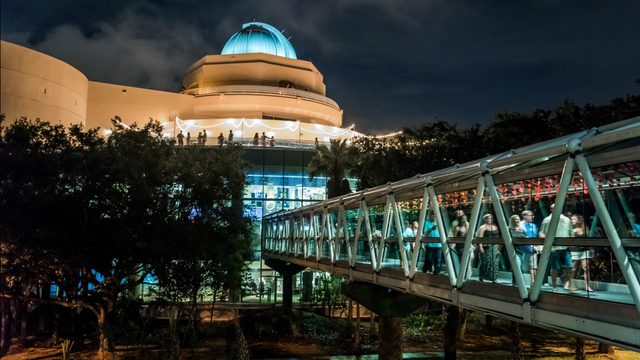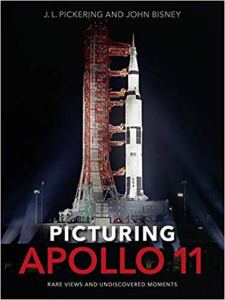
We are happy to participate in this event June 1st, from 8:30 to 10:00 pm, for a talk and book signing of Picturing Apollo 11: Rare Views and Undiscovered Moments.
Science Night Live at Orlando Science Center is your chance to spark your curiosity through fun exhibits and programs… with some adult beverages, of course!
Bring your friends or make a date night of enjoying a unique experiences featuring workshops in The Hive, experiments in Dr. Dare’s Lab, special guest speakers, entertainment, and so much more!
Science Night Live Speakers
Each Science Night Live guests have the chance to hear from some of the greatest minds around!
From Boeing engineers who work on spacecrafts to professors talking about the species within your feces, these speakers are guaranteed to leave you with a new sense of knowledge each and every Science Night Live.
Featured This Event:
Joseph Donoghue, Coastal Marine Geologist, University of Central Florida
Dr. Donoghue, a faculty member of the Planetary Sciences Program in the Department of Physics at UCF presents Knowledge vs. Belief in Climate Change. This expert in climate change will examine coastal processes and climate misinformation and disinformation that have obscured the fact that climate has been changing constantly for most of Earth’s history.
Picturing Apollo 11 – Talks and book signing with authors J.L. Pickering and John Bisney
Journey through this unprecedented photographic history of the space mission that defined an era. Contribute to conversations with historian and authority J.L. Pickering who has archived rare space images for more than 40 years and journalist John Bisney who has covered the space program for CNN, the Discovery Science Channel, and SiriusXM Radio.
Picturing Apollo 11: Rare Views and Undiscovered Moments.
Science Night Live Workshops
Step into The Hive: A Makerspace and walk out with a new sense of creativity. Whether you’re making friendship bracelets or recycled costumes – you and your friends will create lasting memories during Science Night Live Workshops.
Then, make your way to Dr. Dare’s Lab, strap on a pair of goggles and a lab coat and become the scientist in these self-led experiments.
Featured This Event:
Head to The Hive to create your own unique fish printed re-usable tote bags.
Have you ever dissected a squid? Now’s your chance! Need we say more?
Science Night Live Programs
Whether it’s the interactive Science Live! Show, competitive Science Trivia, or looking to the stars on the terrace, the Orlando Science Center staff prepares unique and exciting programs for your to enjoy during Science Night Live.
Featured This Event:
Don’t miss the all-new Science Live! Show, enter the Dojo and learn about the science of ninjas, take part in special Science Trivia, attend a Reef Talk in NatureWorks, and more.
Science Night Live Exhibits
Explore the science center without the kids! From KineticZone to our traveling exhibit, there’s no age limit on fun and curiosity.
Featured This Event:
Be one of the first to explore the Orlando Science Center’s newest traveling exhibit: Teenage Mutant Ninja Turtles: Secrets of the Sewer!
Plus, explore all four floors of the Science Center, and enjoy food and adult beverages!
Tickets to Science Night Live at the Orlando Science Center are are available now for ONLY $16, and guests must be 21 to attend.













 President John F. Kennedy (at bottom of airplane stairs) and members of John Glenn’s family exit Air Force One at Palm Beach International Airport in West Palm Beach, Florida on February 22, 1962. Walking down the stairs behind Kennedy are Glenn’s wife, Annie; his daughter, Lyn; and his son David.
President John F. Kennedy (at bottom of airplane stairs) and members of John Glenn’s family exit Air Force One at Palm Beach International Airport in West Palm Beach, Florida on February 22, 1962. Walking down the stairs behind Kennedy are Glenn’s wife, Annie; his daughter, Lyn; and his son David.